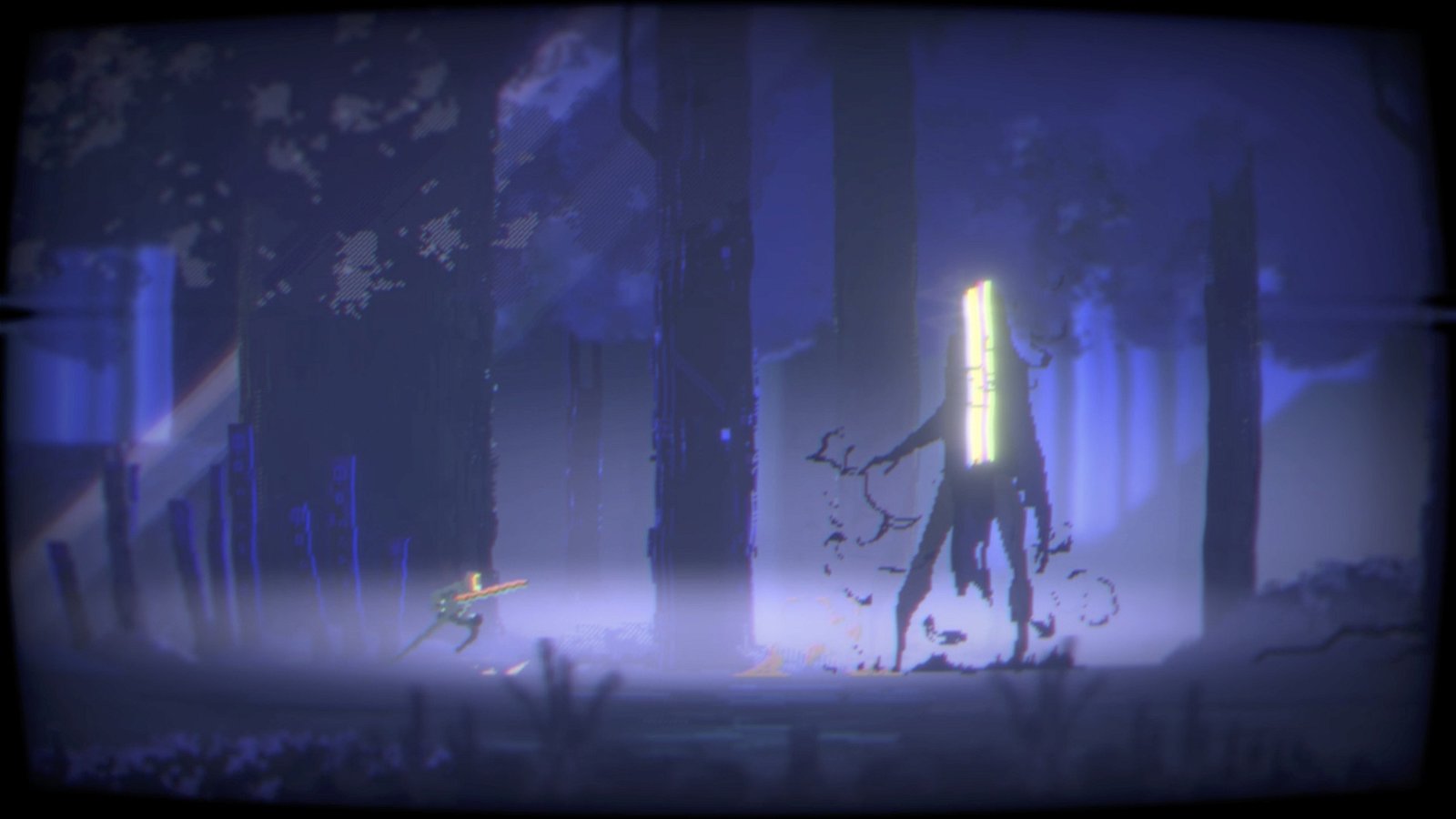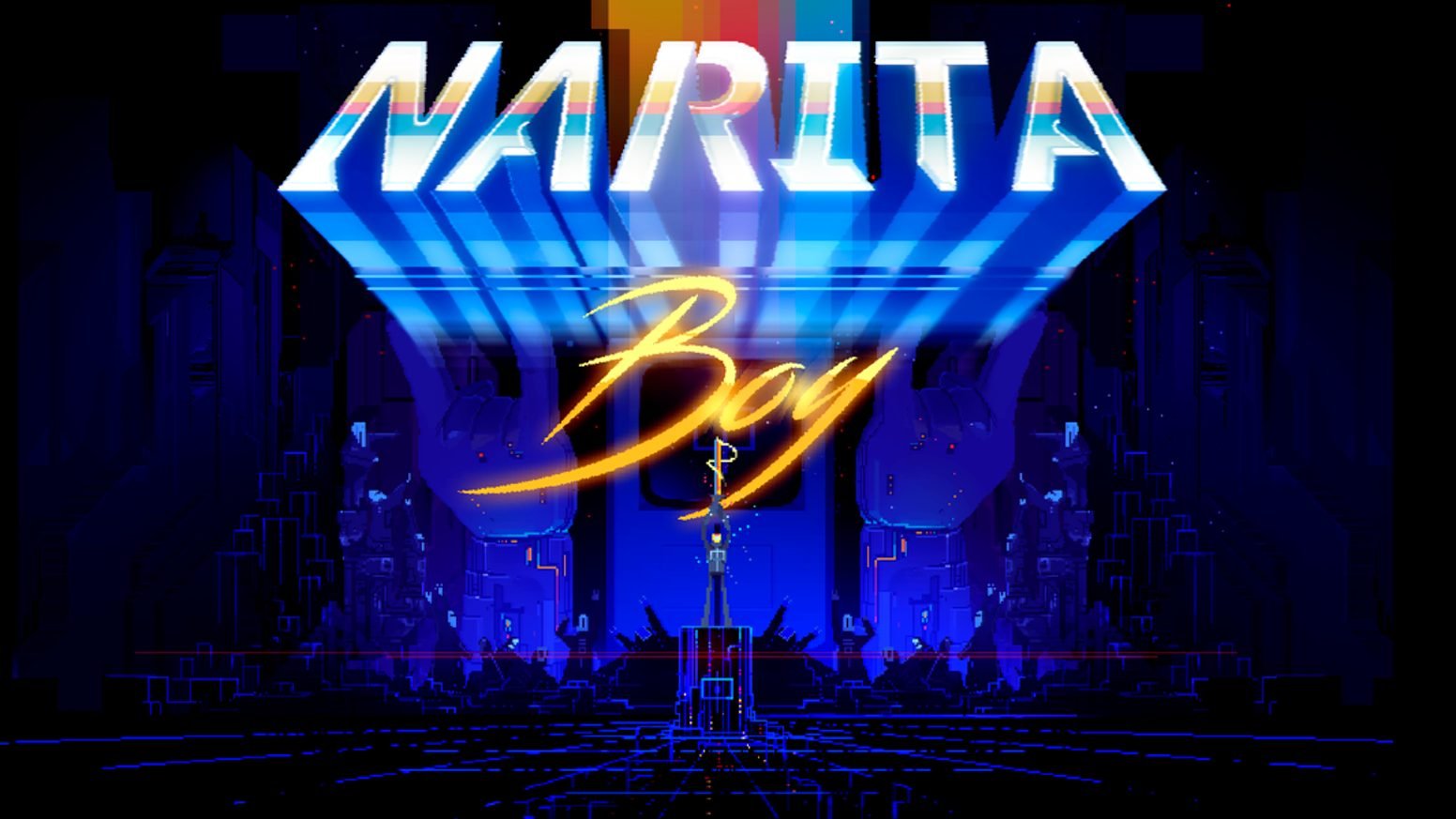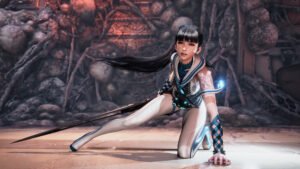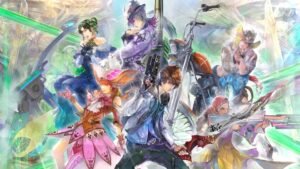If you follow CGMagazine, then you’ll know that I’ve stated many times that I dream of a TRON inspired future. In fact, you may not know this but TRON is actually my favourite movie of all time—immediately drawn to it by its impressive visuals, high concepts, and subtle political and religious allegory.
Since then, any time I see something that resembles TRON, I need to see what it’s all about—it’s what drew me to the absolute piece of garbage: Master Reboot; and what has now drawn me to the frustratingly conflicting Nartia Boy.
Narita Boy caught my eye, not only for its clear TRON inspiration, but it’s resemblance to another masterpiece of gaming: Blasphemous—one of the rare games CGM’s Brendan Quinn gave a 10/10 to, and for VERY good reason. After completing the game, I am left at a digital cross-roads: there’s so much to like about it, but for everything it does right, you can see where it could have been so much better.

Talking about Narita Boy is difficult, since I want to avoid comparing it to Blasphemous—despite the fact that both games were published by Team 17—they were made by different developers, and as such I feel it a bit unfair to hold it to the standard of a completely different game. On the other hand, you can see so much of Blasphemous’ influence in the game’s visual design, it’s atmosphere, and even the gameplay; that it’s hard not to draw comparisons between the two. There is a lot to like about Narita Boy, but I think I would’ve liked it more, had it drawn even more from Blasphemous.
Take for example, the story. Narita Boy’s story wears it’s TRON inspiration right on it’s sleeve. Telling the story of Lionel Pearl, also referred to as “The Creator,” who, while writing code for his “Digital Kingdom” is accosted by a malicious program known as HIM—who reaches through the program and causes Lio to lose his memories. Unable to remember and patch the corrupted lines of code, HIM and his army of rouge programs known as Stallions, seek to infect the Digital Kingdom; dominating it’s three houses and destroying the balance of the “Trichroma.”
The same night, in another part of the city, a young boy receives a calling from his computer; and upon reaching into it, his body becomes entangled with the code of Narita Boy—a digital warrior, who, upon entering the Digital Kingdom; is told of HIM’s plan by the maternal overseer of the Digital Kingdom “Motherboard,” and given the Techno-sword. With its power, Nairta Boy must travel through the Digital Kingdom, restore the Creator’s memories, and defeat HIM.
While it’s honestly a great story, it’s also A LOT, and it’s delivered through a ton of almost constant exposition. Like both TRON and Blasphemous; Narita Boy leans HARD on the religious allegory and imagery and so much of the Digital Kingdom’s foundation seems analogous to Eastern and Western religion. Like Blasphemous, the depiction of religion within the Digital Kingdom is bleak and almost critical, but it seems somewhat incidental to the meta-plot of restoring Lio’s memories.
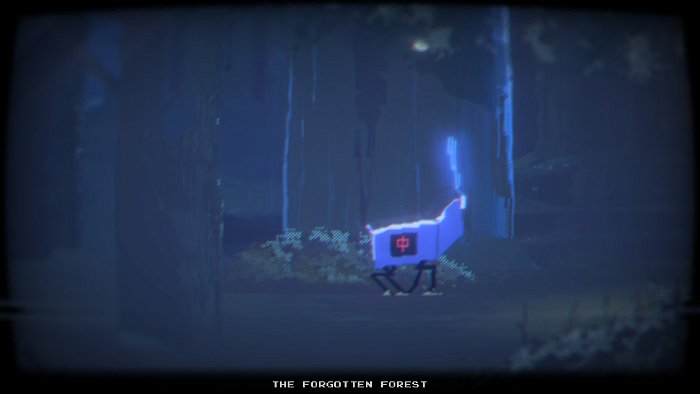
It was the first way that I really wished Narita Boy could be a bit more like Blasphemous—in the way that Blasphemous draws its inspiration from Dark Souls and does a lot with a little. Narita Boy’s story, as well as its world; is overflowing with such striking imagery and symbolism that had it only given the player small pieces of the story and allowed them to interpret the rest, it could’ve made for a much more engaging game.
Then there’s the gameplay, which again, appears similar to Blasphemous, but feels much less deliberate. Nartia Boy takes the form of a 2D platformer with the illusion of Metroid elements mixed in. That may sound overly snarky, but it’s true—each area of the Digital Kingdom appears non-linear in structure, which consists of running around to find keys to open a doors; but for the most part, the design of each area is linear and once you complete it, there’s no returning to it.
This is what I mean when I say it feels less deliberate than Blasphemous, which committed fully to it’s Metroid style design. Where this is the most prominent, is in some of the upgrades Narita Boy gets, which allows him to bypass certain obstacles; but is functionally pointless since there’s no real exploration within any of the levels—and it’s a real shame because the world is SO interesting that it’s just begging to be explored.
Furthermore, controlling Narita Boy is a bit frustrating since he moves incredibly quickly, and his movements are incredibly slippery. Even the slightest flick of the stick will send him bursting forward; and trying to platform with this greasy momentum will usually result in unfortunate pitfalls.

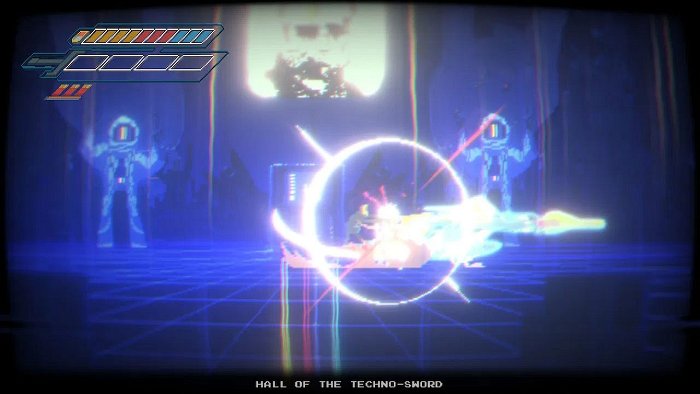
Combat suffers in a similar fashion. While by no means bad—with a large variety of moves and power-ups to utilize, and a variety of interesting enemy types—Narita Boy’s combat doesn’t totally feel intrinsic to its gameplay. Rarely are there enemies just populating the world; instead they only appear in scripted fight sequences. Combat is somewhat chaotic, and—much like with level traversal—certain elements feel pointless.
The most notable example comes in the form of the “Wildfire” abilities, which players can charge up during combat in order to give them an advantage over enemies that bear the same colour fire. In theory, this could be an interesting combat mechanic, however, its execution makes it somewhat redundant since, while Narita Boy can deal extra damage to enemies that have the same colour fire, they can also do extra damage to him. So there’s almost no incentive to use it, since you do the same amount of damage to Wildfire enemies, so you can just fight them normally; the only penalty being the fight having to be slightly longer.
This is something else that, as I was playing, I couldn’t help but wish it was more like Blasphemous. That combat could’ve been tighter and more focused on precise dodging and blocking, that combat was intrinsic to the level design, and not just having progression pause every few minutes.
However, where Narita Boy really shines—again, attributed to its resemblance to Blashphemous—is in it’s visual design. Natria Boy is an absolutely breathtaking game, utilizing pixel art to the absolute fullest. There isn’t a single screen of this game that isn’t incredible to look at; both in design and in concept. Each of the three houses of the Trichroma is uniquely designed—from the Yellow House which resembles a fantasy kingdom if it existed in TRON, to the Blue House which is the quiet and sombre remains of a once great metropolis, now flooded and shrouded in fog; to the Red House, where HIM’s uprising began; now a vast and desolate wasteland.
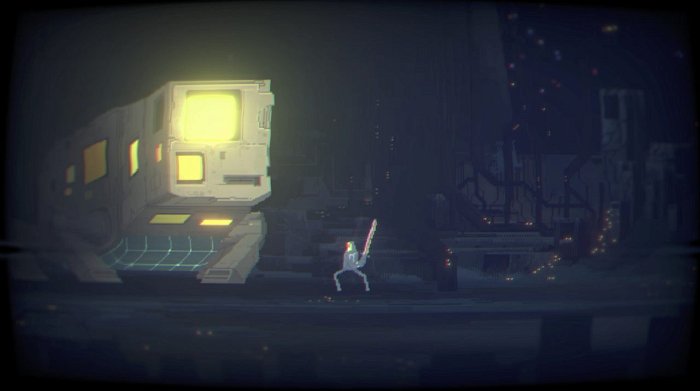
This incredible world design is complimented by striking conceptual characters—both NPCs and enemies. From the visage of a giant, pregnant woman with a Commodore screen for a head, to enemies that range hulking knights, to tortured programs on literal crucifixes. Furthermore, the amazing character design is backed by fantastic animation that not only makes Narita Boy look like a crazy anime warrior, but has enemies bursting into streams of blood and pixels upon death.
It’s hard to know where I land with Narita Boy, because while I found myself being frustrated by it quite a bit; I honestly enjoyed it for the most part and really liked what it was trying to do. I would recommend Narita Boy for the world and visuals alone. Like I said at the top of the review; I think I my opinions are a bit slanted out of a desire for this game to be Blasphemous, but by that same token, I really think if the gameplay was tighter, the world was more open to exploration and there was more mystery within the whole thing, it would be much better than it is.
